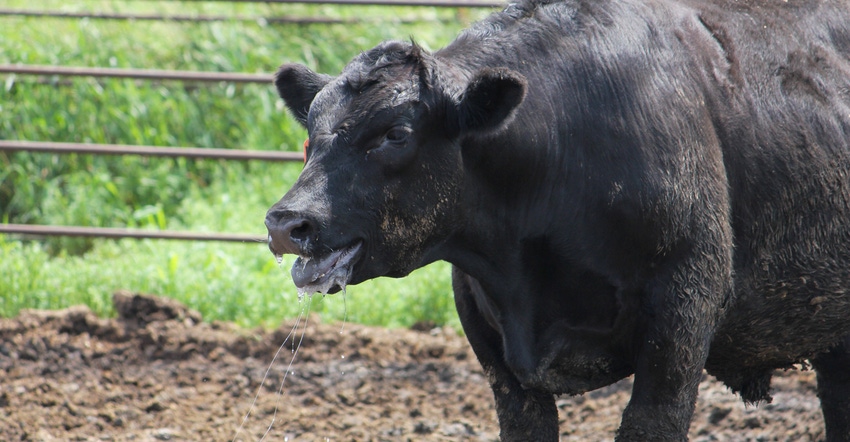
Heavier-than-normal cattle on feed due to pandemic-related marketing delays and the hot, humid summer weather could be a deadly combination, according to Warren Rusche, South Dakota State University Extension feedlot specialist.
Heat stress is always a risk, he says, but the heavier the cattle the greater the risk.
The key to keeping cattle alive during a heat wave is being prepared for it, Rusche says.
The USDA Meat Animal Research Center has a smartphone app that forecasts heat stress conditions a few days out. The tool uses temperature, humidity, wind speed and cloud cover data from the National Weather Service to produce a map with color-coded categories to indicate levels of risk.
The Heat Stress forecasting app can be downloaded from Google Play for Android phones or from the App Store for Apple devices.
Locally, the South Dakota Mesonet Livestock Stress Tool provides advance warning when heat stress is on the way. It’s based on data from Mesonet weather stations across South Dakota.
Immediate safeguards
Some things that Rusche and other Extension specialists in the region say you can do in the short-term to reduce heat stress on cattle include:
Provide plenty of water. Cattle will drink 2.5 times as much water when it is 90 degrees F than when it is 70 degrees. There should be at least 3 linear inches of trough access per head. Extra tanks may be required to ensure enough access and water holding capacity. Maintaining and keeping tanks clean will help make sure that water intake is not limited.
Delay feeding times. Feed 70% or more of the daily ration in the late afternoon or evening. Delaying feeding times has been shown to reduce the animal’s peak body temperature. One method to determine whether or not to reduce morning feed deliveries is to monitor the animals’ early morning respiration rates. If cattle are still breathing faster than normal at 6 a.m. or 7 a.m., the heat load from the previous day didn’t dissipate overnight.
Control flies. Controlling flies to help keep cattle from bunching in groups, allowing for more airflow to each animal.
Suppress estrus. Feed melengestrol acetate (MGA) to heifers to suppress estrus. MGA has been associated with less death loss due to heat stress, presumably because of less riding activity.
Reduce soil surface temp. Spread light colored bedding in unshaded pens to reduce the soil surface temperature.
Increase pen airflow. Remove temporary windbreaks or tall vegetation close to pens. It will increase airflow in the pens.
Longer-term projects
Some longer-term projects to relieve heat stress include installing sprinklers and erecting shade structures to keep cattle cooler.
You’ll want to get the right sprinkler equipment and learn how to operate it properly, though. Coarse water droplets are better than mists. Also, if you apply too much water at the wrong time of day, you might increase the humidity in pens and make the heat stress worse.
Recouping the cost of shade structures for all pens through improved cattle performance may be difficult. But putting shade structures in sick pens or in pens for heavier cattle most prone to heat stress can be helpful.
Read more about:
Heat StressAbout the Author(s)
You May Also Like






